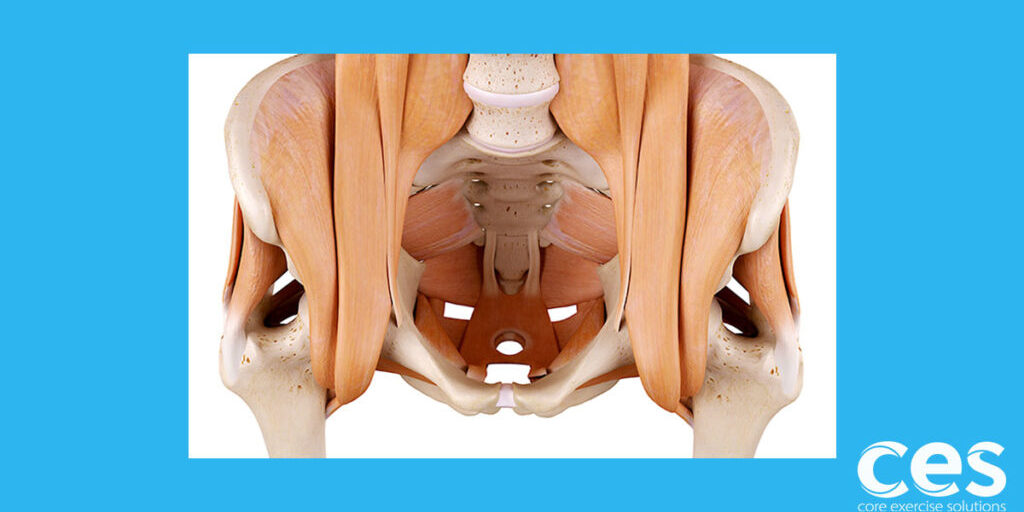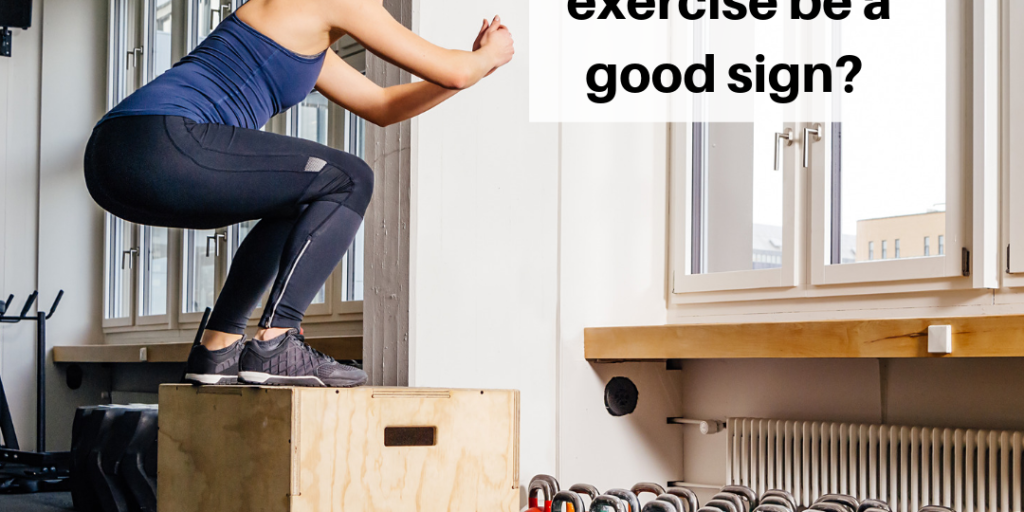Let’s talk about Sally. She is a mom of 2 kids, ages 6 and 4. She is taking her fitness to the next level and is now experiencing some leaking during exercise. This is quite a surprise because her pelvic floor has never been an issue.
This is a common story. All is well, and then months or years later the pelvic floor issues begin seemingly out of the blue. This can even happen to the women who “did their kegels” after childbirth. So why is this so common, and what gives?
The pelvic floor sits in the middle of our pelvis and has many jobs when it comes to helping the body. One of those jobs is preventing leaks, but it also supports the pelvic organs, handles pressure created in the abdomen, and stabilizes the pelvis and spine. With so many jobs to do, we have to look at a few different areas to try and put this puzzle together.
So, let’s dive in a take a look at what I checked on Sally.
#1. Isolation of the Pelvic Floor
Can Sally contract her pelvic floor without contracting her glutes and other deep hip rotators, like the piriformis? If Sally is contracting her hip muscles to try and help her pelvic floor contract, this will become an issue when we increase the demand on the hips during exercise. Our hip muscles need to support our hips. Likewise, I’m going to make sure she can contract her pelvic floor by initiating from the pelvic floor, not the abs. Keep in mind, the deep abdominals do kick in to help give you a max pelvic floor contraction. So you’ll feel your abs work if you’re really lifting your pelvic floor. Sally did a good job isolating her pelvic floor.
(Sidenote: Working on that lower belly pooch? It might be more connected to your pelvic floor than you think.)
(Second side note: If you don’t think you’re contracting your pelvic floor correctly, find a great Pelvic Floor Physical Therapist in your area to help.)
#2. Strength In Other Areas
The pelvic floor is an awesome helper. It’s right there in the middle and it thinks it can do all jobs. So, if the abs, hips, adductors, or pretty much any of the muscles surrounding the pelvic floor are weak, the pelvic floor will have to work harder. If it is working harder, it can have some tightness. Tightness interferes with function, which decreases its ability to stop leaks.
I often see this in the case of weak glutes, the back of the pelvic floor will overwork. If this is Sally’s issue, she would tend to catch herself clenching one glute or both glutes during the day.
My goal is to find those weak areas and get them stronger so the pelvic floor can focus on stopping leaks!
Sally has a great base level of strength, so in her case, that’s not causing these leaks.
#3. Getting Stronger in Other Areas Faster Than the Pelvic Floor Can Keep Up
This often happens through an issue in pressure management. The stronger the pelvic floor is, the more downward pressure it can handle without suffering from leaks or prolapse. Pressure is created in the abdomen when we try to do something really difficult.
Imagine yourself trying to rearrange your living room furniture. Now, pretend you’re going to lift your couch. Did you tighten your core muscles? Did you bear down on your pelvic floor? How did you brace to prepare to lift?
So, this issue can come from two sides. The first could be that Sally is just creating entirely too much intra-abdominal pressure for the task. Is she lifting a 25lb weight but bracing through her core like she is lifting an elephant? Is she holding her breath or slipping into a very shallow breathing pattern and forgetting to get good deep inhales and exhale when she lifts? I might just have to remind Sally to breathe!
We did some breathing work, and when the weight gets tough Sally does forget to exhale from her pelvic floor up, so we worked a bit on breathing.
But, what if it’s more than that? What if Sally knows to breathe and isn’t overly bracing but she still leaks when she does hard exercise? Well, then we need to look at how strong the pelvic floor is in response to the exercise. Did the rest of her body get stronger faster than her pelvic floor? Do we need to help her pelvic floor catch up? I’m not talking about a “sit on the couch and do a kegel” kind of way. (Although, she may need to do some of that as well.) I’m talking about a sport-specific pelvic floor kind of way.
I’m going to take a closer look at when she is leaking, and we are going to figure out how to train it. If it’s during crunches or situps, we are going to break down the sit-up and teach her how to manage pressure down on her pelvic floor during the sit-up. If it’s during jumping, we are going to work on making the jump easier and giving the pelvic floor some prep work. If it’s during a really heavy lift, we are going to work on incrementally increasing intra-abdominal pressure with pelvic floor awareness so that her pelvic floor can adapt to the demand.
Sally ended up creating too much pressure in her abdomen when she lifted heavy, but only on the last set when she got tired. It was her body’s way of cheating, creating extra pressure to get that last rep in. That cheating by creating too much pressure created a big problem for her pelvic floor. So we needed to back off just a little and train it.
I had Sally work on single leg lifts lying on her back while managing pressure. Then we did a small crunch and increased it to a double leg lift. When she lifted the second leg, she felt like she was bearing down and might leak. We also noticed some doming of her rectus. That tells us that her rectus muscle was stronger than her deep TAs. It’s those deep TAs that support the PF.
We know that women who leak tend to have more dominant external obliques and rectus.
In Sally’s case, her pelvic floor said, “too much pressure”! We worked on upping the intensity by doing some other TA work and adding balloons to simulate a pressure increase with easier activities. After just a day of retraining, which was mostly mental, Sally could lift heavier before she leaked. Bringing awareness to her cheating and pelvic floor response helped! After a couple of weeks of getting stronger and continuing to build awareness, Sally could push hard without leaking at all.
Sally just got stronger faster than her pelvic floor was ready for. Her body developed a pattern to do the exercise that put a lot of pressure down on her pelvic floor. Those shortcuts for lifting were more than her pelvic floor could handle. Sally had to take a step back, retrain, and then move forward.
Sometimes the pelvic floor just needs a little more attention and a good coach to help it get there. If you’re leaking, learn more! Awareness can change everything. If that doesn’t do the trick, find a great coach to help you figure out what’s going wrong.
References:
Smith MD, Coppieters MW, Hodges PW. 2007. Postural response of the pelvic floor and abdominal muscles in women with and without incontinence. Neurourol Urodynam 26:377-85.
Ptaszkowski, Paprocka-Borowicz. Assessment of bioelectrical activity of synergistic muscles during pelvic floor muscles activation in postmenopausal women with and without stress urinary incontinence: a preliminary observational study. Clinical Interventions in Aging 2015: September. 1521-1528.
Free Pelvic Floor Educational Series
Dr. Sarah Duvall, PT, DPT, CPT and the CES Team have helped thousands of women create the strength and stability needed to overcome common and not-so-common pelvic floor issues.
Join us today for this 4-part Pelvic Floor Video Series, absolutely free.
We don't spam or give your information to any third parties. View our Terms of Use and Privacy Policy.
Having trouble signing up? Click here











